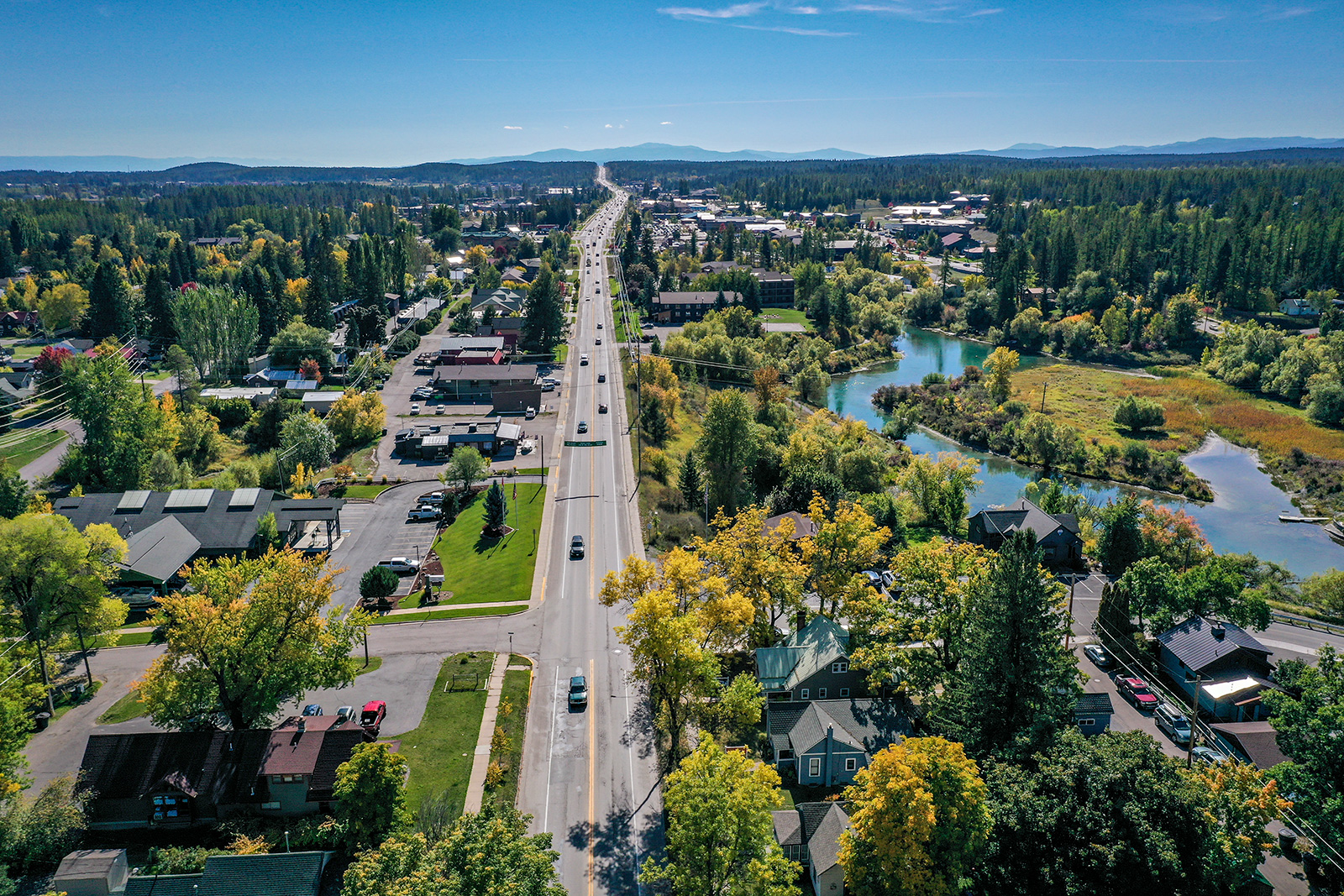MDT Presents Highway 93 Urban Corridor Options in Whitefish
Preferred option includes three lanes on Spokane and Baker avenues, draws backlash from city’s Steering Committee
By Maggie Dresser
The Montana Department of Transportation (MDT) is in the process of finalizing its plan for the U.S. Highway 93 corridor heading into downtown Whitefish on Spokane Avenue and Baker Avenue to the west, which will likely add an additional lane on each street.
MDT’s preferred option would split traffic between Spokane Avenue and Baker Avenue by providing three-lane roadways to increase capacity. Spokane Avenue would have two northbound lanes with one southbound lane and Baker Avenue would include two southbound lanes and one northbound lane. Second Street would be reconfigured with two westbound lanes and one eastbound lane between Spokane and Baker Avenues, according to the study.
The plan drew backlash from the Whitefish Steering Committee, which is comprised of city staff, elected officials and business owners, who criticized the plan for its lack of bicycle lanes and sidewalks.
“We are nervous that three lanes all the way up to Second Street will make Spokane impassable,” City of Whitefish Public Works Director Craig Workman said. “Now you’re crossing three lanes of traffic.”
Workman says MDT’s plan differs from the city’s transportation plan, which aims to accommodate cyclists and pedestrians with a goal of reducing vehicles on the roads.
The steering committee, which Workman is involved in, proposed an alternative that would add a third lane on Spokane up to Seventh Street and then transition back to two lanes as it enters downtown Whitefish.
The connection between Baker Avenue and Spokane Avenue on Second Street is also a concern because stakeholders would prefer to see pedestrians cross at Central Avenue instead, to promote the “economic vitality” downtown.
Whichever plan ends up being finalized, Workman would like to see bicyclists and pedestrians accommodated to both reduce vehicles on the road and to promote Whitefish’s active culture.
“First and foremost, I think it calms traffic,” Workman said. “When drivers see a cyclist or pedestrian it cues people to slow down … It’s also a part of economic vitality and people want to go to cities and towns where they don’t have to drive.”
MDT is working with the steering committee to add bicycle lanes to their preferred alternative with three lanes, but Scott Randall, a consultant with Robert Peccia & Associates, says it will be tricky to add due to a lack of space.
“Things are tight and we’re trying to balance things,” Randall said at a virtual MDT open house on Sept. 23. “If we go straight off the federal standards, they recommend 12-foot travel lanes and this would require an exception to the rules.”
“We are trying to be unique to Whitefish,” Randall said.
To view this study, visit www.mdt.mt.gov/pubinvolve/downtownwhitefish/documents.shtml.